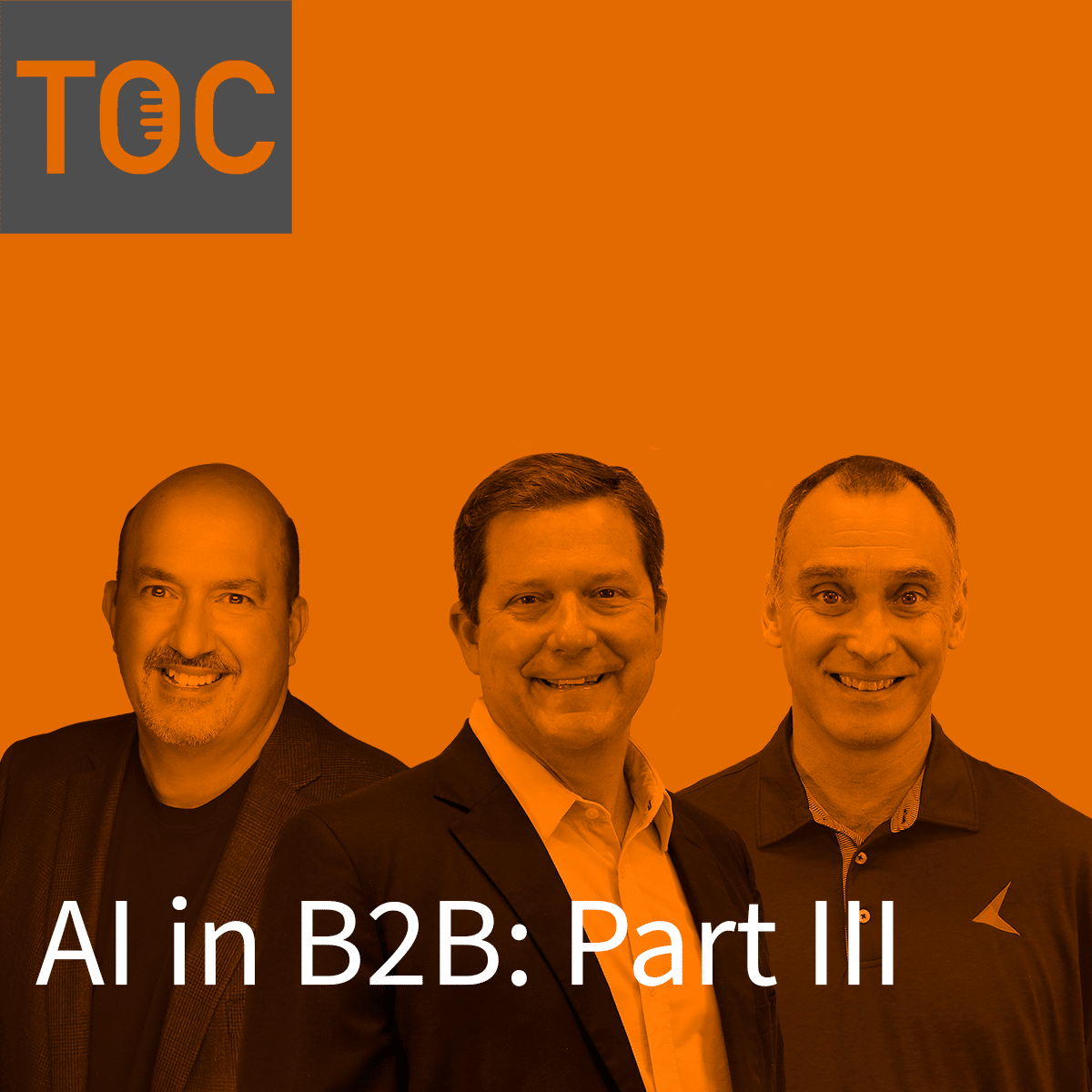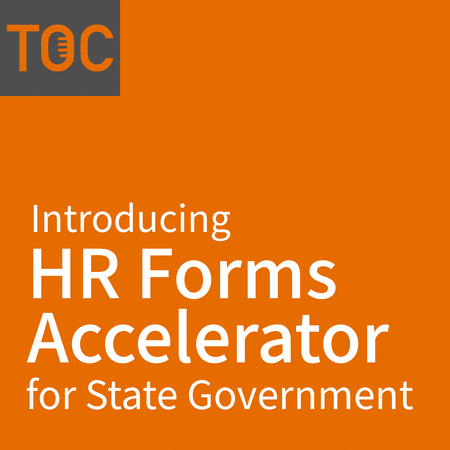This website uses cookies so that we can provide you with the best user experience possible. Cookie information is stored in your browser and performs functions such as recognising you when you return to our website and helping our team to understand which sections of the website you find most interesting and useful.
Listen now on your favorite streaming service!
presented by KeyMark


Summary
The following is a transcription from The Orange Chair Podcast, “RPA in Healthcare: ECM Integration”
In this episode, we conclude our RPA in Healthcare series with Brien Lay, RPA Solutions Architect for KeyMark. Brien discusses how RPA can integrate with ECMs and outlines a number of use cases.
To listen to the full episode, or any other episode, you may do so by selecting your preferred podcast listening method on The Orange Chair Podcast Page.
Transcription
Host (19s): Hi everyone. Welcome back to The Orange Chair Podcast. Today is the conclusion of our RPA for Healthcare series and I’m very excited about this episode. We’ll be talking about RPA and ECM integration. ECM stands for enterprise content management. Today in the Orange Chair, we have Brien Lay. So Brien, who are you and what do you do?
Brien Lay (40s): I am a solutions architect with KeyMark and I focus primarily on robotic process automation software on the technical sales side. I have a background in programming as well as system administration. RPA really interested me. I was selling other products the past five years out in Silicon Valley.
RPA, according to Gartner, is the leading growth segment in software that they track. It was very attractive for me that there was a big market. A lot of corporations are looking to automate processes and RPA is at the forefront of software right now.
Importance of an Integrated System
Host (2m 5s): We’re going to focus on how RPA can be used to integrate with ECMs, or enterprise content management systems, and how that can be a benefit specifically to healthcare organizations. So there are a lot of different ECM systems that fit into that category. Why is it important to have an integrated system?
Brien Lay (2m 33s): It’s critically important. Systems that aren’t integrated, in most cases, require human intervention, or humans doing something. Organizations that don’t have capacity to hire paid developers to integrate the systems and to meet those gaps, typically throw bodies or people at that problem. That doesn’t really scale well because its inefficient and also error prone. Not having integration with different systems is not a benefit to the business at all. This is a detriment for sure.
Host (3m 4s): How can RPA help with system integration such as maybe non-compatible APIs or any way that they can help with an integrated system?
Brien Lay (3m 15s): That’s where RPA really shines. RPA by Blue Prism can interact with systems via API. However, where there’s APIs that are not available, Blue Prism can go ahead and replicate the exact actions humans take within a system.
For example, let’s say you have a new system, whether it’s a new finance system, or an electronic health records system, et cetera. You can pay the vendors either on the receiving or the old vendor side big money to go ahead and write conversions and convert over to the new system. Or you can use RPA.
A business user not having any experience with being a programmer can write logic to go ahead and interact with the screens so that you’re pulling data out of one system and then putting it in the other system.
A massive benefit and a really big use case for RPA is integrating systems together.
Benefit of No-Code
Host (4m 11s): Now that you mentioned that, I do remember a few episodes back, we talked about how Blue Prism is great because it’s a low-code or even a no-code solution. Can you speak to that?
Brien Lay (4m 25s): We really say it’s a no-code solution. However, there is an object that you can put it in there to write code if you’re so inclined, but 99.5% of the automations don’t require any code. Even if it’s API based, we don’t need any code. There are simple drag and drop objects to configure so you don’t have to be a programmer.
In fact, about six months ago a little boy in the UK went through Blue Prism’s foundation course, which is about a two week hands-on course with a series of labs and there’s a test at the end. The little boy, who was 11 years old, completed it successfully.
That just speaks volumes to the fact that is very easy to use. It’s very rapid development and you don’t have to be a coder or know anything about having to code. You just have to know how to drag and drop things. It’s a very Visio-like.
Host (5m 24s): I bet that helps when it comes to integrating those systems and making those API speak to each other. Since you’re not having to learn an entire coding system for one bot, you can drag and drop and make those systems work.
Brien Lay (5m 43s): Absolutely. The digital workers can do multiple things. Let’s say that you’re doing your conversion process for a couple of hours or some sort of financial process in the morning. It takes 30 minutes. That bot is available 24 seven. If it’s only being used for 30 minutes, you have 23 and a half hours to use it for other processes. There’s no extra charge for that, you just pay yearly by the digital worker.
OnBase Boost
Host (6m 13s): Recently we released four assets on the Blue Prism Digital Exchange that integrate with Hyland’s ECM platform, OnBase. How do you see those assets being used in the healthcare space? For those of you that don’t know, the four assets are OnBase Workflow Document Handle, OnBase Get Keywords, OnBase Upload Files and OnBase Execute Ad Hoc User Task.
Brien Lay (6m 41s): We are the only vendor within the Blue Prism Digital Exchange, which is their app store for integrations, that has created any integration for OnBase. These are unique and we have a few plans to expand these as well to do some different things.
Being able to upload files rather than have a human sit there and enter files or pushed them into it, you can go ahead and programatically interact with a file. You can have automations now that use the Unity API and then do things like upload a file, get the document handle, get the keywords out of the existing files, and even execute ad hoc user tasks.
There are a number of things that you can put into OnBase in the form of an ad hoc user task that allows you to execute via RPA. You don’t have to do everything within OnBase with the person sitting there on the keyboard. Now we can go ahead and integrate via drag and drop integration with RPA by Blue Prism into OnBase to perform different tasks. Maybe I just want to get a document handle. Now I can interact with that document and do different things too.
The assets that we have out there are the first ones and the most useful ones that we thought of. There are several more that are in the works. We’re really excited about this integration because KeyMark is one of Hyland’s best partners and we thought why not marry these two different systems and create some really good value for our customers.
RPA and ECM Integration Use Cases
Host (8m 51s): What are some other use cases or other ways that you see RPA and ECM integrating? Maybe through other core systems or to complete complex processes?
Brien Lay (9m 3s): OnBase is one of the leading ECMs is out there that a lot healthcare organizations use behind their EHR systems like Epic and Cerner and others. Those are core systems that are critical to the business. So those typically house the documents as well as have a workflow component to them and can do some light automation tasks that are really critical to the business.
In terms of healthcare, processes involving everything from the patient’s journey to collecting the money at the end, such as revenue cycle, invoice and PO processing, month-end close out, electronic and paper billing, cash applications, checking the patient in, and making sure that their insurance is verified are all manual tasks.
Those things that people do manually can certainly be automated. Our end-goal is to positively impact patient outcomes and lower the cost of care and increase patient satisfaction. That’s really the end-goal, making sure that the patient is taken care of. We’re having an impact on the quality of care, which is absolutely something that you can do with an integration between RPA software like Blue Prism and OnBase.
Accountable Care Organization Use Cases
Brien Lay (10m 0s): A lot of health care organizations have what they call an accountable care organization. One really valid and relevant use case is that ACOs or accountable care organizations, get reimbursed based on certain protocols that are followed. As they’re meeting these protocols and taking care of the patients, then they have the ability to earn the extra money.
Really, that speaks to value-based healthcare. The way that RPA can help with that is let’s say that for example, we have a diabetic patient and that patient, according to ACO, requires certain parameters to be met. For instance, maybe they need to make sure that their glucose is taken every day and make sure that they get an annual or bi-annual foot exam or eye exam.
Whatever the protocols are, we can have a digital worker go and interrogate the EHR and find the diabetic population and then look for the last time that they had a glucose check. With that data flowing in, the bot can make sure that they are getting their glucose checks or find out when the last time they had that eye exam or foot exam. The bot then can see if it’s close to the parameter and go ahead and book them. And not only book an appointment for them, but also make sure that they have the appropriate coverage.
We can have a digital worker automatically verify coverage, set up the appointment, and interact with that patient to get any concerns that they may want to address during those visits. Once you do that then you’re ensuring compliance with those standards that are a part of that accountable care organization, which is going to mean more money in the physician and the facility’s pocket.
Not only can you do that, but you can also have a dashboard showing compliance rates by physician throughout the years. So if there are problems, you can proactively address those. That’s something that a lot of organizations are not really managing well.
Having a digital worker integrated with an ECM solution and an EHR solution can really assist in that manner. A digital worker can go in and not only get the documents, but they can interrogate them.
You can use OCR from a variety of different providers. Blue Prism has it built in, but you can also use ABBYY or a number of different providers that you might have a contract with to go ahead and integrate and pull data off of those documents and make them actionable and do something with them. So there’s a lot of things that you can do in that regard.
Host (13m 44s): You mentioned OCR, so what does OCR stand for for our listeners?
Brien Lay (13m 48s): Optical Character Recognition. That’s basically taking an image or a PDF and pulling the text out of it so you have something that’s actual to help categorize things or report on things, et cetera. You can do any number of things with the data that is in that document.
Advantages of Blue Prism
Host (14m 9s): What are the advantages of using Blue Prism bots over another RPA provider?
Brien Lay (14m 12s): That’s a great questions and one we get asked all the time. We evaluated all of the top players on the market. There’s a lot of great software out there, but we felt that Blue Prism was the best because it’s really enterprise grade. Blue Prism was developed within a bank over in Europe.
At its core, security is a primary tenant within Blue Prism. There are security measures from encrypting the data at rest, in the database, in transit, as well as rules-based access as a very fine grain access controls over your users. Everything was really secure and locked down.
And not only that, but there are immutable logs, which are logs that can not be changed both when you change automations as well as when it’s executed. You can see every step as its executing processes.
If you chose choose to, you can turn on parameter capturing, but by default it is turned off. It is turned off for PCI and HIPAA compliance, et cetera. But those immutable logs are something that security departments and administrators find very helpful because you can not change those.
It’s an absolute record of what happened within that automation. If there are any problems, then you have that record to go back to.
The ROI of RPA
Host (15m 44s): As our time comes to a close today, are there any final thoughts? Is there anything that maybe I didn’t ask or anything that you would like to elaborate on?
Brien Lay (15m 55s): A lot of times the obvious benefit of RPA that people realize is that it’s going to reduce the workload. They realize that it’s going to shift the repeatable, mundane work to a digital assistant or a digital worker.
But the hidden benefit that a lot of people don’t realize until they’ve implemented, is that its really going to increase the employee morale within your organization. Nobody really wants to do boring and repetitive work.
By shifting this burden to a digital worker, employee’s can focus on what they do best, which is using those cognitive skills to interact with your customers and innovate and find new ways to do things. Adding digital workers to your business is really a force multiplier and an absolute competitive advantage.
The average time it takes to realize a return on investment that we’ve seen is around three or four months. We actually had one customer realized that the system paid for itself the day we turn the automation on because it was finding things that they didn’t realize were there.
It really is a no-brainer in terms of the return on investment. What you put into it and what you can get out of it are probably the best that I’ve ever seen in the software industry. And I’ve been in the software industry for about 23 years now. So RPA has a lot of potential because you’re democratizing development. It’s not done by developers anymore.
Now business people can create these automations that are simple and easy to do. So it’s been a massive impact and a field that’s really growing rapidly
Wrap Up
Host (17m 33s): From the conversations that I’ve had recently with other folks within the RPA space, it sounds like such a great benefit no matter what industry it is. I know we’ve been specifically talking about healthcare, but there are a ton of use cases out there.
I like what you said about business users being able to take on automation themselves, because then they are able to really hone in on what’s going to make their business better. They know their processes, they know their systems, they know what happens day in and day out, and they know what’s going to benefit them.
Brien Lay (18m 7s): Absolutely. Our team at KeyMark is really top notch. We have nine different individuals that have 23 different certifications from Blue Prism. We have been getting rave reviews from our customers in terms of our services and implementation and getting things done.
To close out, really our model is to do maybe one or two of the automations for you, but then get your staff up to speed. With RPA you want a team or at least one person that that can develop and trouble-shoot, and build things. We’re always here for you, but really it’s going to be much more cost effective if you train your folks and get them up to speed.
And like I said before, it’s a competitive advantage and one really no business nowadays should be without. PRA is predicted to keep growing for the next three years exponentially.
Host (19m 24s): Brian, thank you so much for coming on the podcast today and sharing about RPA and ECM Integration.
Brien Lay (19m 31s): It’s been my pleasure.
Host (19m 33s): Thank you for joining us on The Orange Chair Podcast. This podcast is brought to you by KeyMark and is produced by Greg Aiken, Clay Tuten and me, your host, Alex Frazier.
For more information on RPA, please visit our website at www.KeyMarkInc.com/RPA. Never miss an episode by subscribing to our podcast channel wherever you listen to podcasts and also like us on Instagram and Facebook @TheOrangeChairPodcast. Want to get in touch? Send us an email at TOC@KeyMarkInc.com







